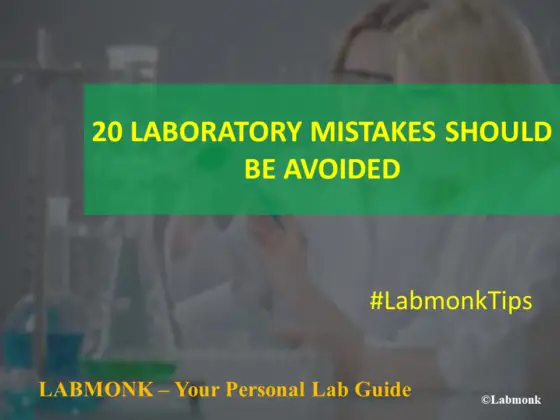Working in a research laboratory needs a lot of hard work and concentration. Yes, it is true that it comes with its own share of failures and frustration, but with proper work and commitment along with a lot of efforts, we can achieve success fast thereby decreasing the rate of failures. Some of the common factors that are responsible for most of the failures in a lab are not enough knowledge in the experiment, lack of experience and some of the very common, silly mistakes that we make in the process. Of course, everybody makes a mistake and its part of our learning process. But the more quickly we identify and rectify the mistake, the more quickly we will achieve success in research and do a better flawless experiment in future.
So, let’s have a brief discussion on some of the few common laboratory mistakes that most of the researcher make.
This is a very common mistake where most of the researchers fail to dissolve the drugs reagents completely and thus they precipitate out from the buffer. Because of this the concentration of the drug will not be as required and thus error in experiments. So, we make sure that the reagents/ drugs are dissolved completely.
This is a very obvious mistake made in the laboratory. When labeling is not done correctly and mixes up samples then all we have to do is repeat the experiment. When we are using handwritten label than be sure that they are legit and when we use a physical label, then make sure they are appropriate for our requirements like withstanding the required temperature.
Many times researchers do a common mistake in an experiment that is adding the wrong reagents in the experiment because of not reading labels properly or not checking properly, like adding beta-mercaptoethanol in place of polyacrylamide. The consequences can be really bad for this.

